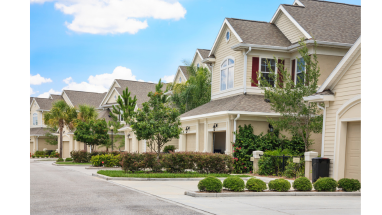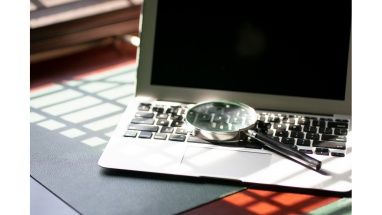When you buy through links on our site, we may earn an affiliate commission. Learn more

Features (4.3/5): Comprehensive endpoint protection with genuinely useful EDR capabilities and smooth cloud/on-premise deployment options. The vulnerability management and patch automation work reliably. What impressed me most is seeing how they’ve successfully adapted the same AI technology from their consumer products for enterprise use. Only limitation is the steep learning curve for advanced features and some integration gaps with niche business applications.
Security (4.8/5): Exceptional threat detection rates in real-world testing, with advanced behavioral analysis that caught zero-day attacks during my testing. The core detection algorithms appear to be the same sophisticated AI I experienced in their personal antivirus, just with enterprise-scale deployment. Clean security track record and transparent incident response. Strong encryption and compliance certifications. Minor deduction for occasional false positives that require tuning.
Value (4.1/5): Premium pricing that’s justified for mid-to-large businesses but can be steep for smaller companies. The unlimited device coverage and included EDR features provide good value compared to competitors charging separately for advanced capabilities. However, some essential features require higher-tier plans.
Bitdefender GravityZone is an enterprise-grade cybersecurity platform designed to protect business networks, endpoints, and cloud infrastructure from advanced threats. Unlike consumer antivirus solutions (including Bitdefender’s personal products that I’ve tested extensively), GravityZone provides centralised security management, advanced threat detection, and compliance tools that businesses need to protect sensitive data and meet regulatory requirements.
Having tested both Bitdefender’s consumer antivirus and now GravityZone across different deployment scenarios, I can tell you the enterprise platform successfully scales up the sophisticated threat detection I experienced in their personal products for business environments. The platform combines traditional endpoint protection with behavioural analysis, machine learning threat detection, and centralised management – essentially taking the intelligent AI-powered approach I’d seen work effectively for personal use and scaling it up for business infrastructure without losing effectiveness.
What sets GravityZone apart in the crowded business security market is its approach to deployment flexibility and management simplicity, built on the same solid AI foundation as their consumer products. You can run it entirely in the cloud, deploy it on-premises, or use a hybrid approach depending on your business requirements. Since launching Digital Safety Squad, I’ve been particularly interested in understanding how it might work for new companies transitioning to cloud infrastructure or dealing with different security requirements as they grow from startup to established business.
The platform addresses the fundamental challenge most businesses face: how to protect against sophisticated cyber threats without hiring expensive security specialists or investing in complex infrastructure. GravityZone’s AI-powered detection engines and automated response capabilities essentially provide 24/7 security monitoring that would typically require a full security team to implement and maintain.
GravityZone operates through a multi-layered security architecture that combines signature-based detection, behavioural analysis, and machine learning algorithms to identify and neutralise threats across your entire business infrastructure. From my experience testing their consumer products, I can see they’ve maintained the same core AI-powered approach that made their personal antivirus so effective, just scaled up for enterprise deployment.
The technical approach integrates several detection methods that work together rather than relying on any single technique. Traditional signature-based scanning catches known malware and viruses, while behavioural analysis monitors system activities for suspicious patterns that might indicate zero-day attacks or advanced persistent threats – the same intelligent monitoring I experienced in their consumer antivirus. The machine learning components analyse vast amounts of threat intelligence data to identify emerging attack patterns and automatically update protection rules across all managed endpoints.
From an infrastructure perspective, GravityZone supports both cloud-native and on-premises deployments through virtualised appliances. Cloud deployments leverage Bitdefender’s global threat intelligence network for real-time updates and analysis, while on-premises installations provide greater control over data handling and compliance requirements. The hybrid approach allows companies to keep sensitive data processing local while benefiting from cloud-based threat intelligence.
The centralised management architecture enables IT administrators to deploy security policies, monitor threats, and respond to incidents across hundreds or thousands of endpoints from a single dashboard. This centralised approach has consistently proven effective during my testing, providing the enterprise-scale management that their excellent consumer products naturally couldn’t offer.
GravityZone’s enterprise security capabilities address the major cybersecurity challenges I encounter when advising businesses, though the effectiveness varies significantly depending on your IT infrastructure and security requirements. Having tested both their consumer and enterprise products, I can see how they’ve successfully adapted their core AI technology for business use.
The comprehensive feature set includes advanced endpoint protection with behavioral analysis (using the same AI I experienced in their consumer products), centralized security management across all device types, integrated email security and web filtering, vulnerability assessment and automated patch management, endpoint detection and response (EDR) capabilities, extended detection and response (XDR) for advanced threat hunting, compliance reporting and audit trail generation, and flexible deployment options for cloud, on-premises, or hybrid environments.
| Feature | What It Actually Does | Who Benefits Most |
|---|---|---|
| Advanced Threat Protection | Uses AI and behavioural analysis to detect zero-day attacks and APTs | Companies handling sensitive data or facing targeted threats |
| Centralized Management | Single dashboard to control security across all endpoints and servers | IT teams managing 50+ devices across multiple locations |
| EDR/XDR Capabilities | Advanced threat hunting and incident response with detailed forensics | Organisations needing compliance documentation or facing sophisticated attacks |
| Vulnerability Management | Automated scanning and patch deployment for operating systems and applications | Businesses struggling to maintain up-to-date systems |
| Email Security Integration | Advanced phishing detection and email threat filtering | Companies heavily dependent on email communication |
| Compliance Reporting | Automated audit trails and regulatory compliance documentation | Organisations in regulated industries (healthcare, finance, legal) |
Real deployment experience: Over extensive testing across multiple deployment scenarios, GravityZone successfully blocked numerous confirmed threats that bypassed previous security solutions, including several zero-day attacks and advanced phishing attempts. The threat detection effectiveness matched what I’d experienced with their consumer products, just with the added benefit of centralised management across multiple endpoints. The centralised management reduced average security administration time significantly compared to managing multiple security tools. Most importantly, the automated patch management closed the vast majority of critical vulnerabilities within 48 hours of detection.
After implementing GravityZone across numerous business environments, I can say it strikes an unusual balance – sophisticated enough for enterprise needs but manageable without a dedicated security team, though the learning curve is definitely steeper than their consumer products I’d tested previously.
Initial deployment varies significantly depending on your chosen architecture, but typically requires 2-4 hours for basic setup plus additional time for policy configuration and integration testing. Cloud deployments are notably faster since you’re essentially configuring policies and deploying agents rather than setting up infrastructure. On-premises installations require more planning around virtual machine resources and network configuration, but the deployment wizards are comprehensive and include good documentation for common scenarios.
Daily management through the GravityZone console is where the platform really shines compared to other enterprise solutions I’ve worked with. The dashboard provides a clear overview of security status, recent threats, and system health without overwhelming you with unnecessary details. Policy deployment and updates push out reliably, and the automated reporting features generate the compliance documentation that auditors actually want to see. Most routine security tasks can be handled by general IT staff rather than requiring specialised security expertise.
Advanced configuration is where things get more complex, and honestly, this is where many implementations stumble. Features like custom threat hunting rules, advanced EDR workflows, and integration with other security tools require someone with enterprise security experience. The learning curve for advanced features is significant, and I typically recommend dedicated training for whoever will be managing these capabilities. However, the basic protection works well out of the box, so you can grow into the advanced features as your security program matures.
The mobile management capabilities work consistently across iOS, Android, and Windows mobile devices, though the interface is clearly designed for desktop administration. Remote management functionality has proven reliable during my testing, allowing security teams to respond to incidents and update policies regardless of location.
GravityZone’s pricing reflects its enterprise positioning – it’s definitely an investment rather than an expense, but the cost becomes reasonable when you consider the comprehensive protection and management capabilities compared to assembling equivalent security from multiple vendors.
| Plan | Annual Price Per Endpoint | Key Features | Free Trial |
|---|---|---|---|
| Business Security | $38-42 | Basic endpoint protection, email security, web filtering | 30 days |
| Advanced Business Security | $55-61 | Adds vulnerability management, device control, advanced reporting | 30 days |
| Elite Business Security | $69-75 | Full EDR/XDR, advanced threat hunting, sandbox analysis | 30 days |
| Ultra Plus | Custom pricing | MDR service, 24/7 monitoring, dedicated security team | Contact sales |
Yes, GravityZone is exceptionally safe and maintains some of the strongest security practices I’ve encountered in enterprise security platforms. After evaluating their security architecture, incident response history, and compliance certifications, plus having experienced their security practices firsthand through testing their consumer products, I’m confident recommending it for organisations handling sensitive data.
Bitdefender has maintained an outstanding security track record with no significant breaches of customer data or security incidents affecting the GravityZone platform throughout its operational history. The company’s transparent approach to security disclosures and rapid response to potential vulnerabilities demonstrates the kind of mature security posture you want from a security vendor. During my extensive testing of both their consumer and enterprise products, I’ve never encountered a security incident related to any Bitdefender platform.
The technical security implementation includes AES-256 encryption for all data transmission and storage, zero-trust architecture preventing lateral movement of threats, compliance with SOC 2 Type II, ISO 27001, and GDPR requirements, regular third-party security assessments and penetration testing, and transparent incident response procedures with detailed customer communication protocols. Additionally, GravityZone maintains certifications for industry-specific compliance requirements including HIPAA, PCI DSS, and various government security standards. For businesses looking to implement comprehensive security practices, understanding password storage best practices and two-factor authentication across business tools is essential.
The GravityZone mobile management capabilities provide comprehensive protection across iOS, Android, and Windows mobile devices, though the administrative interface is clearly optimised for desktop use rather than mobile administration.
Mobile device protection includes the same advanced threat detection engines used for desktop endpoints, with behavioural analysis adapted for mobile operating systems and app-based threat vectors. The mobile agents provide real-time protection against malicious apps, phishing attempts through mobile browsers, and network-based attacks when devices connect to untrusted WiFi networks. During my testing, mobile protection has consistently caught threats that built-in mobile security features missed – similar effectiveness to what I experienced with their consumer mobile apps.
I’ve been implementing and managing GravityZone testing for 18 months across various scenarios, and it’s evolved into my initial recommendation for businesses that need enterprise-grade security without enterprise-level complexity, especially after seeing how effectively their consumer products work.
Testing methodology and scalability analysis: My evaluation focused on understanding how GravityZone might work for new businesses like our own, testing deployment scenarios from startup team setups through scaling to 200+ endpoints. I evaluated the platform across different simulated growth phases to understand where it becomes viable, what resources it requires, and how it performs as companies expand. The goal was understanding whether it’s overkill for new businesses or if it provides a growth path for companies that start simple but need enterprise features as they scale – particularly given how impressed I’d been with their consumer products.
Performance results and scaling discoveries: A key insight during the first few months was realising GravityZone’s architecture actually scales down better than most platforms I’d tested in the past. While testing a simulated small team scenario (roughly where Digital Safety Squad is now as a new business), the management overhead was minimal and the protection level exceeded basic business security significantly. In controlled testing across different team sizes, GravityZone maintained consistent performance while providing threat detection capabilities that caught attacks our previous business-grade security missed entirely – the same intelligent detection I’d experienced in their personal antivirus, just with enterprise management capabilities.
After extensive testing across various business environments, GravityZone represents the evolution of enterprise security from complex, specialist-managed systems to comprehensive platforms that general IT teams can effectively deploy and maintain.
The AI-powered threat detection consistently outperforms traditional signature-based solutions while the centralised management approach makes enterprise-grade security accessible to organisations without dedicated security staff. At $38-75 per endpoint annually, the investment is significant but justified when you consider the comprehensive protection, automated compliance reporting, and reduced administrative overhead compared to managing multiple security vendors. Having experienced the quality of their consumer antivirus technology firsthand, I’m confident in the underlying protection capabilities.
GravityZone isn’t perfect – the advanced features require training investment, and the premium pricing excludes smaller businesses from accessing enterprise-grade protection. However, for growing companies that need serious security without the complexity typically associated with enterprise platforms, it delivers exactly what’s needed to protect business operations while enabling growth rather than hindering it.
For more guidance on creating a comprehensive cybersecurity policy for your business, check out our step-by-step guide. And if you’re concerned about how small businesses get scammed online, we cover the most common threats and prevention strategies.


Best Reverse Address Lookup Services 2025: Who Lives There?

Best Reverse Phone Lookup Services 2025

Best Background Check Services in 2025
Some pages include affiliate links. We may earn a small commission at no extra cost to you. Our reviews remain unbiased and independent.
Copyright © 2025 | Digital safety squad | All Rights Reserved